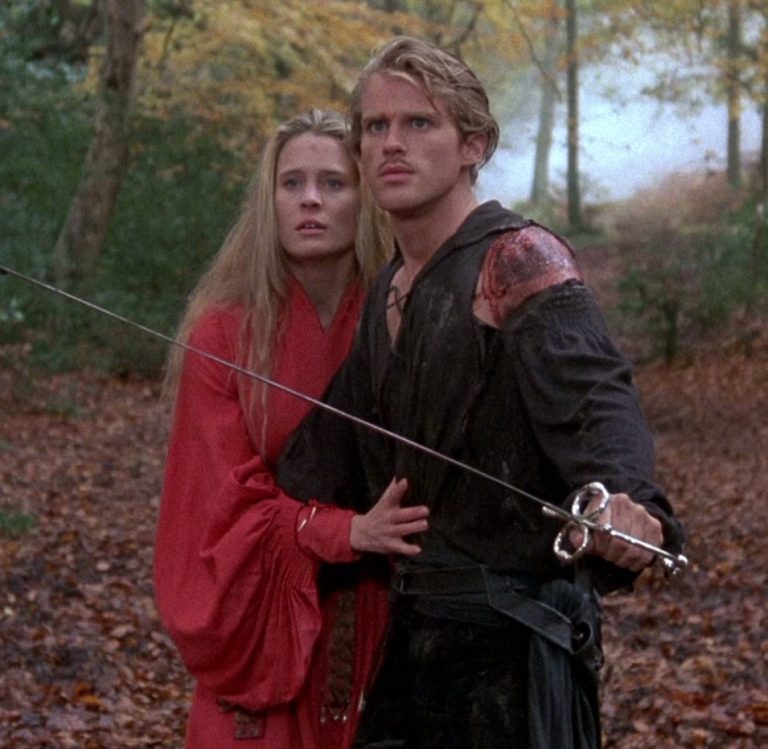Secondary Characters with Their Own Needs
We’re now getting into another one of my favorite topics—secondary characters. This pillar in your novel is so important, it could almost be a corner support pillar. In this course exploring the 12 key pillars of novel construction, we’ve spent time looking at your main character—your protagonist—and we’ve dabbled a little into the role secondary characters play in your story. But there is so much more.
Needless to say, I could write an entire book on secondary characters. And I’ve written some very deep, explorative blog posts about them (which I highly encourage you to read here, here, and here).
The importance of secondary characters in your novel cannot be overemphasized. They are crucial to your story, unless you are writing about a protagonist in isolation, which is a unique kind of story. And novels about one person off alone (usually a “man against nature” structure) are challenging to write because of the dearth of a “supporting cast.”
The Need for a Supporting Cast
Having other characters in your novel makes it much easier to construct a strong story. Why? Because these characters provide support and opposition to your protagonist as he goes after his goal in the story. By now you’ve had it drilled into you that your novel should be about one main character who is after something. We looked at the five main types of goals “heroes” pursue in a story, and many of the posts you’ve read on this blog emphasize the fact that everything in a novel centers on the protagonist’s goal.
If you keep this in mind, you will create additional characters that will either help or hinder your protagonist. We took a look at how subplots are worked into stories with this same objective. The subplots of both the main and secondary characters should be all about advancing the main plot. How do you “advance” a plot? By helping or hindering the protagonist as he goes after his goal.
Yes, I am being repetitive for a reason. Too many novels I critique are lacking so many of the essential elements needed to tell a strong, compelling, enduring story. The pillars of novel construction are weak, and some pillars are just missing altogether. If your novel does not have all 12 pillars constructed properly, your novel will collapse. It’s that simple.
So we’re going to be taking a long (and hopefully exciting) look at the roles secondary characters play in your novel—because those roles are really important.
They Must Serve a Purpose
All too often, like subplots (as I mentioned in a previous post), secondary characters are thrown into a novel without much thought or purpose. This is a bad thing. Just as with every element in your story, your secondary characters have to serve very specific purposes. They should be created each for a reason, to play a key part in the story.
Too often writers throw in characters they think are entertaining, or will provide some drama or laughs, without giving thought to the bigger picture. Characters are thrown into scenes to make it appear like a lot is happening, when actually all they do is clutter and distract from the main story.
We discussed in a previous post how subplots that are just thrown in without thought do nothing to help give meaning and strength to the overall story. The same is true with random secondary characters that are inserted for no clear reason. Everything you put in your novel should done with deliberate purpose, and the type of secondary characters you create can make or break your story.
I will venture to say that much of the success of a great novel hinges on the secondary characters in the story.
So with that said, we’re going to consider the types of characters you might have in your novel and the roles they play in relation to your protagonist. Because all that matters regarding those characters is their relation to your main character and how they either help or hinder him from reaching his goal.
It’s All about Who They Are
This isn’t just about plot elements—what you have these characters do. It’s more about who they are. About relationships. Sure, you will need these secondary characters to do things that advance the plot. But more importantly, these characters effect change in your main character. They play key roles in his character arc, while they themselves have strong character arcs.
Here’s the key to create strong, meaningful, complex characters in your novel: Develop them just as deeply as you develop your main character. Give them a core need (preferably one that clashes with that of your protagonist) a big fear, and a lie they believe.
If you’ve read my other posts on character development, you’ll know that every character needs a core need, a deep fear, and a lie they believe about themselves and their world. In addition, all characters must have not only a past and history that has made them who they are in a believable way, they have to have a life outside of the main plot.
Plot Layers for Secondary Characters
Yes, you want to create A and B plots for these characters (If you don’t know what I’m talking about, read this post). There should be one major thing that your secondary character is concerned with, that is taking up most of her time and attention apart from your protagonist. And there can be some minor issues she is dealing with as well. Giving secondary characters those layers of plot that I spoke about will make them rich, real, complex, and believable.
But . . . before you go there, you must first come up with some characters for you novel. And the way you do this is to focus on your protagonist’s core need, his plot goal for the book, his inner motivation. There are specific roles each character plays in your story, and although there are no set rules as to how many characters you need to have, know that there are three basic types of secondary characters you will find in novels and movies, and next week we are going to start to look at these three types.
If you keep in mind, though, that every character in your novel needs to serve a purpose—to add richness to the story in more than just a visual way—you will be well on your way to building a strong pillar that will add support to your story.
Spend some time thinking about the characters you already have in your story, then take some time really delving into their core need, fear, and lie they believe. Make sure these characteristics are created deliberately so that they can either clash with those of your protagonist or provide the means for support and help. Next week we’ll explore this further.
Any thoughts on the importance of secondary characters in a novel? Who are your favorite secondary characters and why?
Inspection checklists:
Inspection Checklist 1-concept with a kicker
Inspection Checklist 2-protagonist with a goal
Inspection Checklist 3-conflict with high stakes
Inspection Checklist 4-theme with a heart
Inspection Checklist 5-Plots and Subplots in a String of Scenes
Photo Credit: Missus Martian via Compfight cc












I believe that every novel needs a supporting cast. Just like the movies. It can be difficult to write them at times.
What I’m finding is that as I stop thinking about them like characters and start thinking of them as people they start to flesh out organically.
If we think of them less as the role they play in the story and more as the person that they are that drives them to do the thing we have them doing, they become real. They become multi-faceted. Deeper. Richer.
God I love writing.
Good point about thinking of them as people. I’m not sure how other writers perceive their characters, but mine are very real to me. And I never start writing a novel until they are. I spend a lot of time working on them, their motivation, and history/background, which is essential for all the characters.
Thanks you for writing this. It was timely, as just this week I started making separate documents for each of the secondary characters in my new WIP. Your post clarified some things that had been a little mushy in my brain, and it also gives me the push I need to develop their backstories further.
One new thing I did this time was to give each character some ‘diary time.’ After deciding on a few characteristics and key attitudes they might have, and playing those against my tentative plot ideas, I launched into writing their thoughts in ‘their own words.’ I learned a bunch in a hurry doing this, which further helped me brainstorm the plot and subplots.
This blog is one of my favorite writing resources. Good luck with all your publishing endeavors!